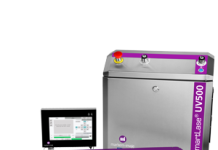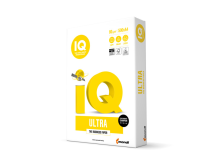According to Focus Label Machinery, flexible food packaging, including sachets, pouches and bags, plays a key role in the safe storage of perishable food items.
Manufactured from foil, film or paper, this packaging is easy yielding so that, when printed and sealed, it acquires a pliable shape and is easier to fill to a desired capacity. However, the printing of food packaging is more challenging than other substrates and there are important considerations to bear in mind to safeguard product quality and safety.
Protecting food products from spoilage
Primarily, food packaging is designed to maintain the quality of the product and prevent it from deteriorating prior to sale. Flimsy packaging that splits or allows air to enter could cause the food to become stale or, in some cases, may even make it unsafe to eat. Stringent food safety laws are designed to protect the end consumer from harm, so printed packaging must not allow contamination with chemicals, inks, odours or tastes that could make the product unpleasant to eat or unfit for consumption.
Maximising the food product’s shelf life
Most foods have a shelf life, either a use by or a best before end date, after which they should not be consumed. The premature loss of food due to poor packaging will damage a brand’s reputation and adversely affect the manufacturer’s profits. High-quality packaging, in contrast, will ensure that foods remain in prime condition, even when transported many miles from manufacturing plants to shops.
Reduce wastage
According to recent research, over 4.8 million tonnes of food are wasted in supply chains in the UK every year. In the food manufacturing and processing industry alone, enough food is wasted to feed everyone in the UK for 16 days. While waste on this scale is regrettable given the country’s food poverty crisis, the effects are more far-reaching: the energy and water used to manufacture, pack and transport wasted food is also lost – an unnecessary hit on an already fragile environment. High-quality food packaging can prevent the needless waste of food by better protecting it against degradation and damage, so manufacturers will benefit from a healthier return on investment.
Improve saleability
Finally, well-designed food packaging is eye-catching and, therefore, more likely to attract consumers browsing the shelves of the supermarkets. Flexible packaging printing gives product designers more freedom to create unmissable designs to capture the imagination of consumers and improve sales. Also, sustainable food packaging is a win-win, as it will meet consumers’ demands for eco-friendly products without compromising on the style, colour density, vibrancy or quality of the print.
FOCUS LABEL MACHINERY
https://www.focuslabel.com





















